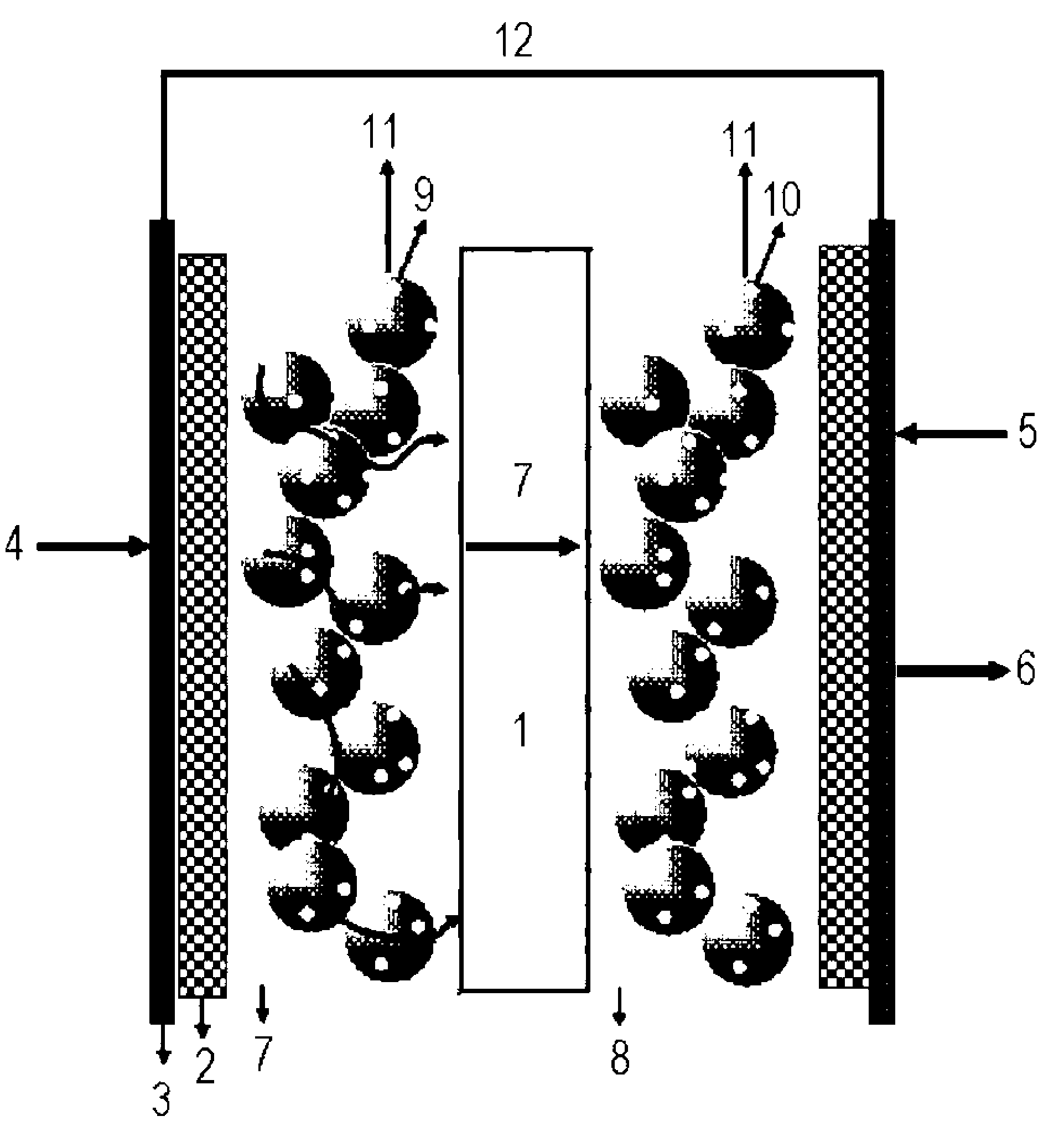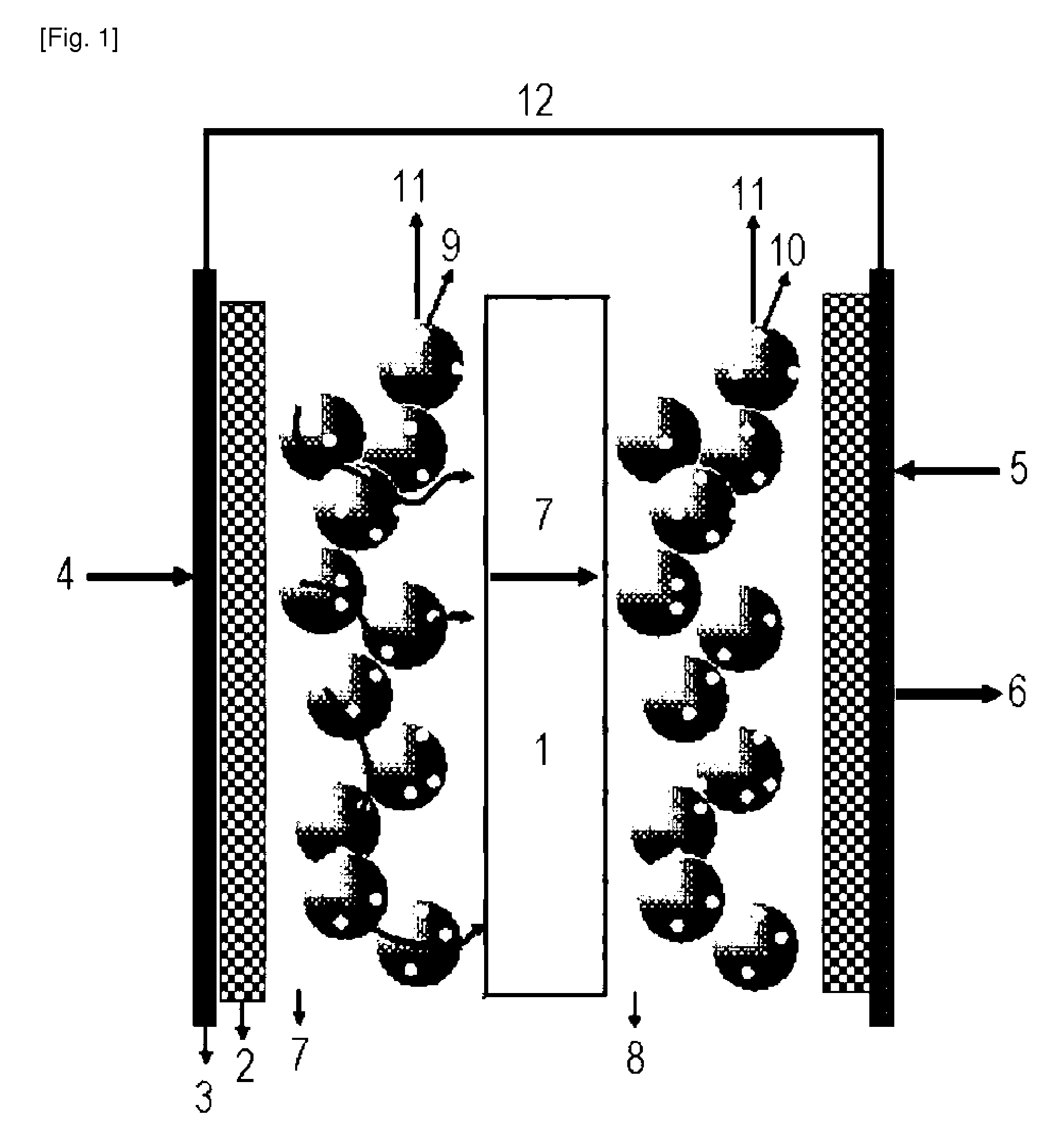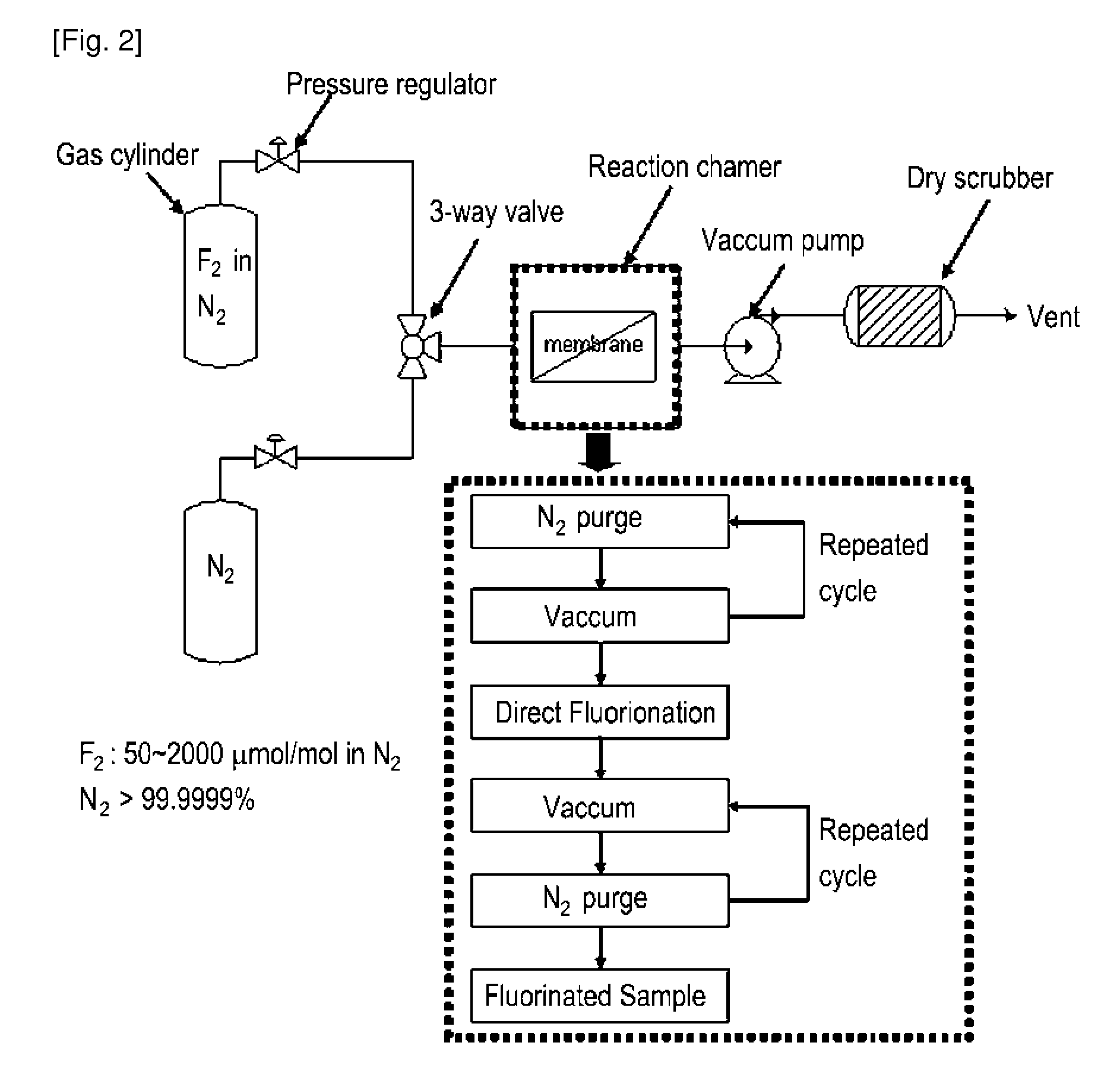Proton exchange polymer membrane using surface treatment technique based on direct fluorination, membrane-electrode assembly, and fuel cell comprising the same
a surface treatment technique and technology of proton exchange, applied in the direction of cell components, final product manufacturing, sustainable manufacturing/processing, etc., can solve the problems of fuel cell performance rapidly deterioration, low electrochemical unit cell performance of polymer membrane, and reduced catalytic activity, so as to improve proton conductivity and reduce methanol permeability , the effect of high dimensional stability
- Summary
- Abstract
- Description
- Claims
- Application Information
AI Technical Summary
Benefits of technology
Problems solved by technology
Method used
Image
Examples
example 1
[0073]A surface of the sulfonated poly(arylene ether sulfone) membrane having a chemical structure in the following Formula 1 was fluorinated by dry direct fluorination process based on the order illustrated in FIG. 2 using a fluorination reactor shown in FIG. 2. Specifically, a dried polymer electrolyte membrane is inserted into a fluorination reaction chamber, and the membrane is fixed thereto. Nitrogen gas was purged into the chamber, and then vacuumed out. By repeating this process, chemical substances that may reside in the chamber were removed. Thereafter, since the membrane may be damaged when fluorine gas is directly purged into the chamber, an inert gas, i.e., nitrogen gas was purged and mixed with the fluorine gas via a 3-way valve to minimize the damage. Then, the flat sheet membrane sample was fluorinated in the reactor at ambient temperature and pressure (25° C. and 1 atm), while inflowing the F2 gas of 50 ppm, for 5 minutes. To terminate the direct fluorination reactio...
example 2
[0074]A surface-fluorinated sulfonated poly(arylene ether sulfone) membrane was prepared in the same manner as in Example 1, except that the fluorination time was 10 minutes.
example 3
[0075]A surface-fluorinated sulfonated poly(arylene ether sulfone) membrane was prepared in the same manner as in Example 1, except that the fluorination time was 30 minutes.
PUM
| Property | Measurement | Unit |
|---|---|---|
| temperature | aaaaa | aaaaa |
| pressure | aaaaa | aaaaa |
| degree of surface-fluorination | aaaaa | aaaaa |
Abstract
Description
Claims
Application Information
 Login to View More
Login to View More - R&D
- Intellectual Property
- Life Sciences
- Materials
- Tech Scout
- Unparalleled Data Quality
- Higher Quality Content
- 60% Fewer Hallucinations
Browse by: Latest US Patents, China's latest patents, Technical Efficacy Thesaurus, Application Domain, Technology Topic, Popular Technical Reports.
© 2025 PatSnap. All rights reserved.Legal|Privacy policy|Modern Slavery Act Transparency Statement|Sitemap|About US| Contact US: help@patsnap.com



